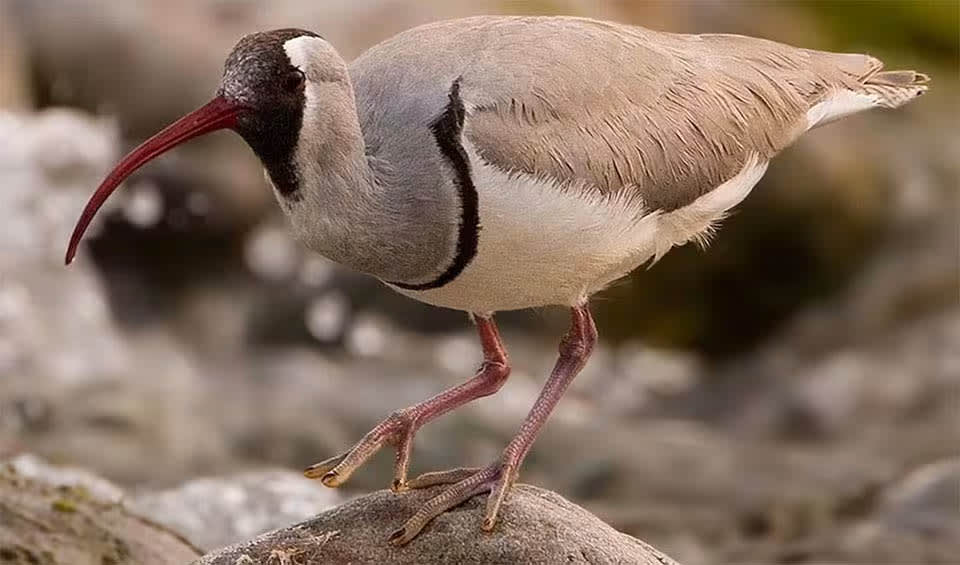The Ibisbill is a unique and specialized bird that occupies a very specific ecological niche within the riverine environments of Central and South Asia. Its rarity and distinctiveness in appearance and behavior have intrigued ornithologists and bird enthusiasts worldwide.
Resembling a bird painted by a whimsical artist, the Ibisbill is characterized by its striking appearance, which includes a long, down-curved beak reminiscent of an ibis, hence its name. The beak is distinctive in shape and function, as it has evolved to allow the Ibisbill to feed efficiently in the habitats it frequents. The bird’s plumage is mostly grey with a black face, throat, breast band, and distinctive white wing patches visible in flight, contrasting with the reddish-brown legs and long, curved bill.
The Ibisbill’s habitat is highly specialized, breeding at high altitudes in river basins where the water flow is slow, preferring the flat areas strewn with pebbles and rounded boulders. These habitats provide the necessary conditions for their nesting and foraging behaviors. They are often found at elevations ranging from 500 to 4,000 meters during the breeding season. They will descend to lower elevations of around 100 meters during the winter, although they remain within similar riverine environments.
Their varied diet includes insects and their larvae, small crustaceans, and fish, which become a more significant part of their diet during the winter months at lower elevations. The Ibisbill’s foraging technique is quite specialized; it uses its beak to probe soft mud, peck at the water’s surface, and rake through gravel to uncover prey. This versatility in foraging behavior allows the Ibisbill to exploit a variety of food sources throughout the year.
Distribution
 Afghanistan
Afghanistan Bhutan
Bhutan China
China India
India Kazakhstan
Kazakhstan Kyrgyzstan
Kyrgyzstan Myanmar
Myanmar Nepal
Nepal Pakistan
Pakistan Russia
Russia Tajikistan
Tajikistan Turkmenistan
Turkmenistan Uzbekistan
UzbekistanAnything we've missed?
Help us improve this page by suggesting edits. Glory never dies!
Suggest an editGet to know me
Terrestrial / Aquatic
Altricial / Precocial
Polygamous / Monogamous
Dimorphic (size) / Monomorphic
Active: Diurnal / Nocturnal
Social behavior: Solitary / Pack / Herd
Diet: Carnivore / Herbivore / Omnivore / Piscivorous / Insectivore
Migratory: Yes / No
Dangerous: Yes / No
Domesticated: Yes / No




